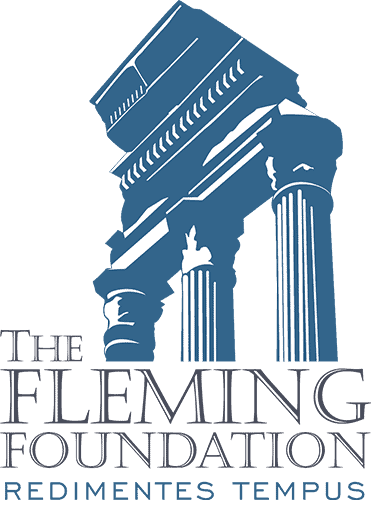Photios, the Franks, and the Filioque, Part I
The Balkans: by fate the cross-roads between Greek East and Latin West. In the fourth century, the line dividing the Western from the Eastern Roman Empire had been drawn through the northern and westerly reaches of these lands denominated by the Romans as “Illyricum.” As far as sacred jurisdiction was concerned, Illyricum was, by the eighth century, disputed territory. Against the ancient claims of Rome and because of her obnoxious refusal to fall in line with the imperial proscription of images, Emperor Leo III (717-741), “the Saracen-minded,” had removed even western Illyricum from Rome’s theoretical jurisdiction and placed it directly under Constantinople at the very outset of the Iconoclast Controversy. But even after Constantinople repudiated iconoclasm for the first time at the Second Council of Nicaea (787) and thus reconciled with Rome, no thought was given to restoring Illyricum to the latter. The pope’s appeal for this restoration contained in his letter to the Second Council of Nicaea was, in fact, (deliberately) “lost in translation” when the epistle was rendered into Greek. The Greeks had no intention of giving up canonical claims to territories that they saw as belonging within their political “sphere of influence.” But the Roman Church maintained her claims, and so old Illyricum—and by extension the untamed Balkan territories beyond it—remained a sort of ecclesiastical “no-man’s land” between Rome and Constantinople. Meanwhile, the emergence of a new people on the scene would transform the Balkans into an active front in a missionary-war between the two great Sees of Christendom.
Already in the late seventh century, the northern Balkans were becoming the hunting-ground for migrant Turkic tribes known as Bulgars. No mere marauders, the Bulgars, supported by the hordes of compliant Slavs whom they commanded, had royal aspirations. While their paganism might have made them an object of interest to the Church, there was no real question of evangelization among Turko-Slavic barbarians so bent on the destruction of the Empire, a goal which they very nearly encompassed. In 811, the imperial army under the direct leadership of Emperor Nikephoros came to grief at the Battle of Pliska. The hapless Nikephoros himself was killed on the field and his skull—gilded without and scraped clean within—became the drinking cup of Krum, Khan of the Bulgars. Constantinople herself was only spared thanks to her walls.
The empire not only survived this existential threat, but made a comeback. In the first place, the Bulgar juggernaut seems to have lost steam in 814 upon the death of Krum. His successors, impressed by the civilization of the Byzantines, made peace with Constantinople. In the second place, the distracting and destabilizing conflict over the cult of religious images was put to lasting rest in 843. (There were two periods of iconoclasm. The first lasted from the early eighth century until the Second Council of Nicaea in 787; a more lukewarm iconoclasm was revived in 813 and lasted until the “Triumph of orthodoxy” in 843). The final triumph of orthodoxy brought with it not only greater cohesion in Byzantine society, but economic renewal, intellectual efflorescence, and evangelical energy.
Since the sixth century, the Balkan peninsula had been inundated by Slavic immigrants who had effectively de-Hellenized the countryside and removed much of it from the actual control of the Byzantine authorities. Now serious efforts were made to “Byzantinize” the Slavs of the southern Balkans: their villages were placed under “headsmen” responsible to the local strategos (Byzantine military governor) while the Slavs themselves were imbued with the Greek faith and Greek letters. This should be emphasized: Byzantine proselytism of the Slavs living in what is (today) Greece was conducted in and through the Greek language. The deployment of Church Slavonic as a medium for evangelization occurred among the Slavic and Turkic peoples beyond the boundaries of the Empire. And it was precisely to such as these—to Ratislav of Moravia in the northwestern Balkans and to the Bulgar Khan Boris farther East—that Byzantium directed her missionaries in the middle of the ninth century, among whom were Constantine-Cyril and Methodios, who devised the “Glagolitic” and, eventually, “Cyrillic” scripts for rendering of Greek religion into the Slavic tongue.
This remarkable missionary activity was carried out under the equally remarkable Patriarch Photios—the premier intellectual of the Byzantine ninth-century “Renaissance” and one of the most outstanding figures of the Byzantine millennium.
Before his sudden elevation to the patriarchate in 857, Photios had been a high-ranking civil servant, an ambassador to the Arabs, and teacher of philosophy at the so-called “University of Constantinople.” Despite this promising beginning, and his proselytizing zeal as patriarch, Photios had a problem. This had to do with the manner of his elevation to the patriarchal throne, occasioned as it had been by political scandal and contested as it continued to be by schism. Before Photios, the patriarchal throne had been occupied by a saintly if inflexible monk named Ignatios. Ignatios was dear to the Empress Theodora, who had presided over the final restoration of the icons following the death, in 842, of her nominally iconoclastic husband Theophilos. Theodora ruled in the name of their young son Michael, who in turn enjoyed a close relationship with his uncle, the Caesar Bardas, Theodora’s brother. When ugly rumors began to circulate that Bardas was living in incest with his own daughter-in-law, and the patriarch refused to give him communion, the Caesar acted swiftly. In the name of his nephew, Bardas confined Theodora to a convent and forced the deposition of Patriarch Ignatios. In Ignatios’ place, Bardas nominated the bureaucrat-intellectual Photios who, though a layman, was hastened through the clerical ranks and placed on the patriarchal throne.
Those who were loyal to the ascetical ex-patriarch and scandalized by the “intrusion” of a layman into the throne of Constantinople—many such were monks—severed their communion with the patriarchal see. And that’s not all. A pro-Ignatian monk named Theognostos even sought redress in Rome, where he pleaded Ignatios’ case before Pope Nicholas I. Nicholas, convinced of his own supremacy over the universal Church, took these appeals with the utmost seriousness. Photios’ own “systatic letter,” wherein he proclaimed his consecration and orthodoxy, reached the pope too late. Informed about the scandal surrounding his elevation, Pope Nicholas was not sympathetic. In particular, he objected to the irregularity of appointing a layman who was then only hurried through every grade of holy orders after the fact. Moreover, Pope Nicholas intended to conduct a full review of the case of Photios and Ignatios and to pronounce a verdict. Photios had no intention of complacently submitting himself to any such “Roman tribunal.”
And Photios—or rather, the Greek missionaries loyal to his own see—had another problem: competition in the mission-field. At the same time that the Greeks were hastening to gather in the ripe wheat of the Moravian and Bulgarian peoples into the great barns of Constantinople, Carolingian-Frankish missionaries were bearing the standards of Latin Christendom ever eastward. In Moravia, these Latins were actively disseminating among the Slavs their own vision of orthodoxy and orthopraxy, and it was alarming and offensive to the Byzantine missionaries. The Bulgar Khan Boris, meanwhile, considered whether the yoke of pope or patriarch would better suit his imperial ambitions. The Balkans were to become the front-line in a war that was brewing between Rome and Constantinople. As we shall see, at the center of this conflict was the question of whether the Holy Spirit proceeds from the Father and the Son.




It seems that the church as always been mired in conflict. Why should the Latin church reject Icons when they had their statues. The Icons are a two dimensional spiritual representation of the holy. The interior of the church itself is and icon. It represents the 5 senses – of sight, sound, taste. smell and feel. At a time when few people could read the icons told the story of Christ.
Regarding the Holy Spirit proceeds from the Father and the Son, didn’t Pope Benedict place emphasis on this?
Excuse me. I meant didn’t Pope Benedict place less emphasis on this?
This is an excellent account. At the risk of being tedious, I want to emphasize your geopolitical point that the line between the Eastern and western Empires ran through the Balkans, indeed right through Montenegro. As the Western Empire collapsed entirely, the East sporadically tried to shore up its position in frontier areas. Their only competition came from aggressive Frankish moves Eastward, often by Slav-hating Germans encouraged to think of Poles, Czechs, et al, as less than fully human. To the South, the competition came from the Roman Church. It would, however, be unreasonable to expect that during periods of Eastern resurgence, that they would be content to let Rome muscle into territories conquered or at least subdued by Constantinople. In other words, the West had historical jurisdiction but the East had the claim of boots on the ground.
As the Bulgars and Serbs began to create something like nations, it was important to receive royal status. A savage like Krum could claim any title he liked, but later rulers, at least nominally Christian, wanted external recognition that might intimidate their truculent barons and put them on par with other powers, such as Venice and various German princes. Then, too, Constantinople was more dangerous, because of its power and proximity. On the other hand, the culture of the Eastern Empire was more powerful and more attractive. A typical case is the ruler of Serbian Raska, Stefan Prvovencani, the first-crowned. He apparently received royal dignity from the Vatican, which caused his influential and diplomatic brother, the monk Sava, to desert him. Eventually, he cut a deal with Constantinople and was crowned by imperial authority, while his brother became head of the Eastern Church in Serbia. This competition–both between Rome and Constantinople and among the slavic and Bulgarian statelets–was the cause of endless friction. To make a long story very short, the church in Germany insisted on the Latin liturgy, while the East–somewhat grudgingly–acquiesced in Slavonic. It seems to me that Rome’s power-play in the Balkans came to late to be of use and became the source of infinite mischief, which has lasted down to our own day.
I wonder if you are going to speak about Pope Nicholas a bit more, a great, albeit imperial-minded Pope with an ego that matched and perhaps exceeded that of the learned Photios to whom lovers of the classics owe so much, for his work in preserving and commenting on texts.
Dear Dot,
Thank you so much for your question, because it gives me the opportunity to clarify this point, so often misunderstood.
Despite the fluctuations of the official position of the patriarchate of Constantinople on holy images in the eighth and ninth centuries (teeter-tottering between proscription and approbation), the Latin Church (including the Roman See and the Frankish Church) never opposed the production of holy images absolutely or per se. Both the papacy and the Frankish Church condemned Byzantine Iconoclasm. However, Charlemagne’s theologians and the pope were by no means in agreement on the question on the appropriate uses of holy images beyond their basic legitimacy. While the pope embraced the doctrinal definitions of the Second Council of Nicaea (787) in favor of icons and the legitimacy of venerating them, the Carolingians rejected the results of Nicaea II. There were many reasons for this rejection, but one of them was a basic disagreement between the Carolingian Frankish Church, on the one hand, and the Mediterranean Church (Rome and Constantinople), on the other, about whether holy images should be venerated (e.g., receive prostrations and kisses from the faithful). Rome and Constantinople maintained that these practices were legitimate and salutary. But the Carolingians, even while they recognized the legitimacy of holy images per se, rejected icon veneration as unsound or even dangerous. Carolingian theologians, such as the fiery Visigoth Theodulf of Orleans, maintained that holy images were useful for didactic purposes–for displaying the mysteries of the faith to the illiterate. This is the purpose of images of Christ, His Mother, etc.–edification. But they should not be objections of veneration. In the Carolingian view, as expressed in the Opus Caroli Regis, the Byzantines had hysterically gone from one extreme (icon-breaking) to another (icon-adoring)–but, the Carolingians maintained, icons should be neither broken nor adored.
For anyone who has an interest in pursuing the Carolingian attitude toward sacred images, please see Thomas F.X. Noble’s fantastic book: Images, Iconoclasm, and the Carolingians.
Thank you so much for your kind words, Dr. Fleming. I also especially appreciate the information and perspectives you have provided on the Balkans between East and West, given your own in-depth knowledge of this region and its history. You are right: something more must be said about Pope Nicholas I and Photios. They both had egos, as you say, and both are fascinating characters.
Dear Dot,
Thank you so much for your question, because it gives me the opportunity to clarify this point, so often misunderstood.
Despite the fluctuations of the official position of the patriarchate of Constantinople on holy images in the eighth and ninth centuries (teeter-tottering between proscription and approbation), the Latin Church (including the Roman See and the Frankish Church) never opposed the production of holy images absolutely or per se. Both the papacy and the Frankish Church condemned Byzantine Iconoclasm. However, Charlemagne’s theologians and the pope were by no means in agreement on the question on the appropriate uses of holy images beyond their basic legitimacy. While the pope embraced the doctrinal definitions of the Second Council of Nicaea (787) in favor of icons and the legitimacy of venerating them, the Carolingians rejected the results of Nicaea II. There were many reasons for this rejection, but one of them was a basic disagreement between the Carolingian Frankish Church, on the one hand, and the Mediterranean Church (Rome and Constantinople), on the other, about whether holy images should be venerated (e.g., receive prostrations and kisses from the faithful). Rome and Constantinople maintained that these practices were legitimate and salutary. But the Carolingians, even while they recognized the legitimacy of holy images per se, rejected icon veneration as unsound or even dangerous. Carolingian theologians, such as the fiery Visigoth Theodulf of Orleans, maintained that holy images were useful for didactic purposes–for displaying the mysteries of the faith to the illiterate. This is the purpose of images of Christ, His Mother, etc.–edification. But they should not be objections of veneration. In the Carolingian view, as expressed in the Opus Caroli Regis, the Byzantines had hysterically gone from one extreme (icon-breaking) to another (icon-adoring)–but, the Carolingians maintained, icons should be neither broken nor adored.
For anyone who has an interest in pursuing the Carolingian attitude toward sacred images, please see Thomas F.X. Noble’s fantastic book: Images, Iconoclasm, and the Carolingians.
Thank you so much for your kind words, Dr. Fleming. I also especially appreciate the information and perspectives you have provided on the Balkans between East and West, given your own in-depth knowledge of this region and its history.